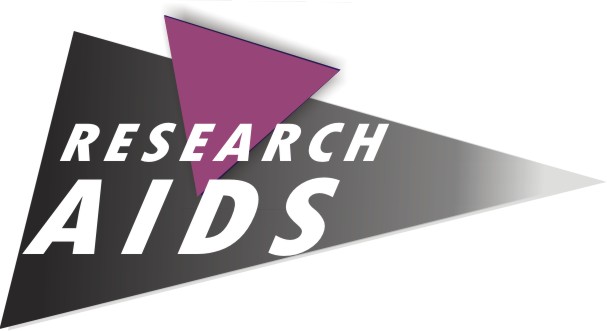Examples include, but are not limited to, the following:
- Bacillary angiomatosis
- Oropharyngeal candidiasis (thrush)
- Vulvovaginal candidiasis, persistent or resistant
- Pelvic inflammatory disease (PID)
- Cervical dysplasia (moderate or severe)/cervical carcinoma in situ
- Hairy leukoplakia, oral
- Idiopathic thrombocytopenic purpura
- Constitutional symptoms, such as fever (>38.5°C) or diarrhea lasting >1 month
- Peripheral neuropathy
- Herpes zoster (shingles), involving ≥2 episodes or ≥1 dermatome
CDC Classification System: Category C AIDS-Indicator Conditions
- Bacterial pneumonia, recurrent (≥2 episodes in 12 months)
- Candidiasis of the bronchi, trachea, or lungs
- Candidiasis, esophageal
- Cervical carcinoma, invasive, confirmed by biopsy
- Coccidioidomycosis, disseminated or extrapulmonary
- Cryptococcosis, extrapulmonary
- Cryptosporidiosis, chronic intestinal (>1-month duration)
- Cytomegalovirus disease (other than liver, spleen, or nodes)
- Encephalopathy, HIV-related
- Herpes simplex: chronic ulcers (>1-month duration), or bronchitis, pneumonitis, or esophagitis
- Histoplasmosis, disseminated or extrapulmonary
- Isosporiasis, chronic intestinal (>1-month duration)
- Kaposi sarcoma
- Lymphoma, Burkitt, immunoblastic, or primary central nervous system
- Mycobacterium avium complex (MAC) or M kansasii , disseminated or extrapulmonary
- Mycobacterium tuberculosis , pulmonary or extrapulmonary
- Mycobacterium , other species or unidentified species, disseminated or extrapulmonary
- Pneumocystis jiroveci (formerly carinii ) pneumonia (PCP)
- Progressive multifocal leukoencephalopathy (PML)
- Salmonella septicemia, recurrent (nontyphoid)
- Toxoplasmosis of brain
- Wasting syndrome due to HIV (involuntary weight loss >10% of baseline body weight) associated with either chronic diarrhea (≥2 loose stools per day ≥1 month) or chronic weakness and documented fever ≥1 month
WHO Clinical Staging of HIV/AIDS and Case Definition
The clinical staging and case definition of HIV for resource-constrained settings were developed by the WHO in 1990 and revised in 2007. Staging is based on clinical findings that guide the diagnosis, evaluation, and management of HIV/AIDS, and does not require a CD4 cell count. This staging system is used in many countries to determine eligibility for antiretroviral therapy, particularly in settings in which CD4 testing is not available. Clinical stages are categorized as 1 through 4, progressing from primary HIV infection to advanced HIV/AIDS (Table 4). These stages are defined by specific clinical conditions or symptoms. For the purpose of the WHO staging system, adolescents and adults are defined as individuals aged ≥15 years.
WHO Clinical Staging of HIV/AIDS for Adults and Adolescents
Primary HIV Infection
- Asymptomatic
- Acute retroviral syndrome
Clinical Stage 1
- Asymptomatic
- Persistent generalized lymphadenopathy
Clinical Stage 2
- Moderate unexplained weight loss (<10% of presumed or measured body weight)
- Recurrent respiratory infections (sinusitis, tonsillitis, otitis media, and pharyngitis)
- Herpes zoster
- Angular cheilitis
- Recurrent oral ulceration
- Papular pruritic eruptions
- Seborrheic dermatitis
- Fungal nail infections
Clinical Stage 3
- Unexplained severe weight loss (>10% of presumed or measured body weight)
- Unexplained chronic diarrhea for >1 month
- Unexplained persistent fever for >1 month (>37.6°C, intermittent or constant)
- Persistent oral candidiasis (thrush)
- Oral hairy leukoplakia
- Pulmonary tuberculosis (current)
- Severe presumed bacterial infections (eg, pneumonia, empyema, pyomyositis, bone or joint infection, meningitis, bacteremia)
- Acute necrotizing ulcerative stomatitis, gingivitis, or periodontitis
- Unexplained anemia (hemoglobin <8 g/dL)
- Neutropenia (neutrophils <500 cells/µL)
- Chronic thrombocytopenia (platelets <50,000 cells/µL)
Clinical Stage 4
- HIV wasting syndrome, as defined by the CDC (see Table 3, above)
- Pneumocystis pneumonia
- Recurrent severe bacterial pneumonia
- Chronic herpes simplex infection (orolabial, genital, or anorectal site for >1 month or visceral herpes at any site)
- Esophageal candidiasis (or candidiasis of trachea, bronchi, or lungs)
- Extrapulmonary tuberculosis
- Kaposi sarcoma
- Cytomegalovirus infection (retinitis or infection of other organs)
- Central nervous system toxoplasmosis
- HIV encephalopathy
- Cryptococcosis, extrapulmonary (including meningitis)
- Disseminated nontuberculosis Mycobacteria infection
- Progressive multifocal leukoencephalopathy
- Candida of the trachea, bronchi, or lungs
- Chronic cryptosporidiosis (with diarrhea)
- Chronic isosporiasis
- Disseminated mycosis (eg, histoplasmosis, coccidioidomycosis, penicilliosis)
- Recurrent nontyphoidal Salmonella bacteremia
- Lymphoma (cerebral or B-cell non-Hodgkin)
- Invasive cervical carcinoma
- Atypical disseminated leishmaniasis
- Symptomatic HIV-associated nephropathy
- Symptomatic HIV-associated cardiomyopathy
- Reactivation of American trypanosomiasis (meningoencephalitis or myocarditis)

No comments:
Post a Comment